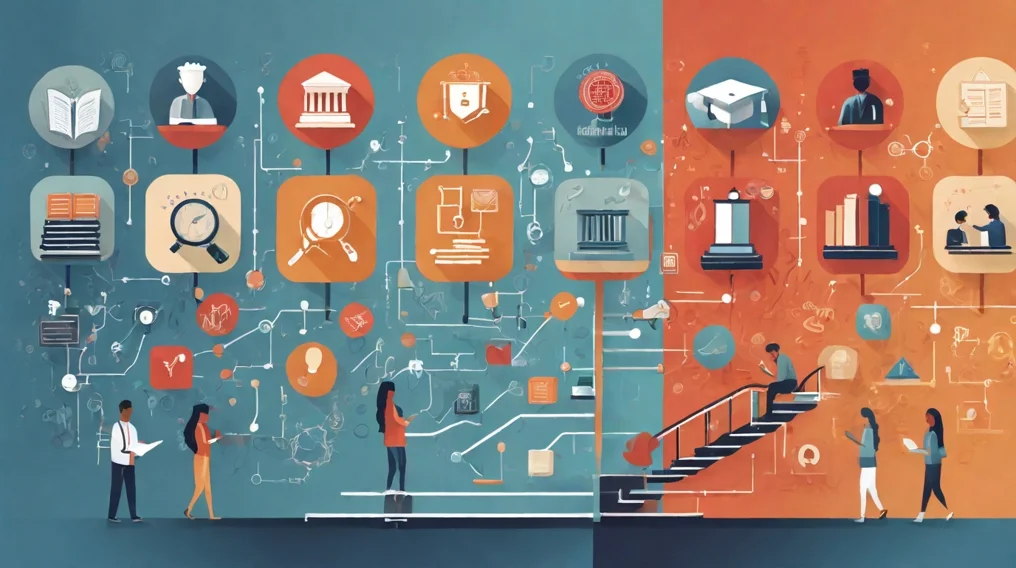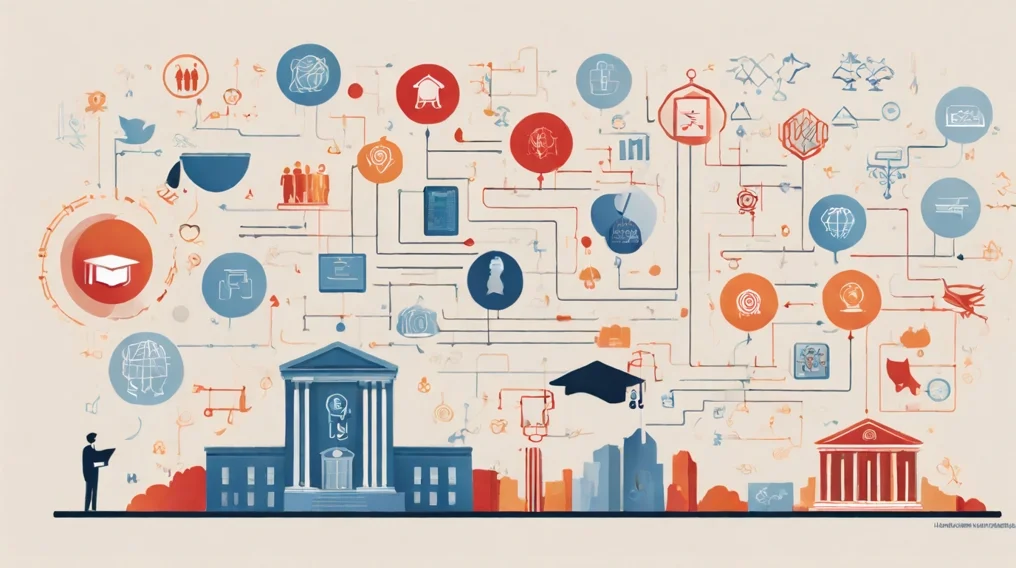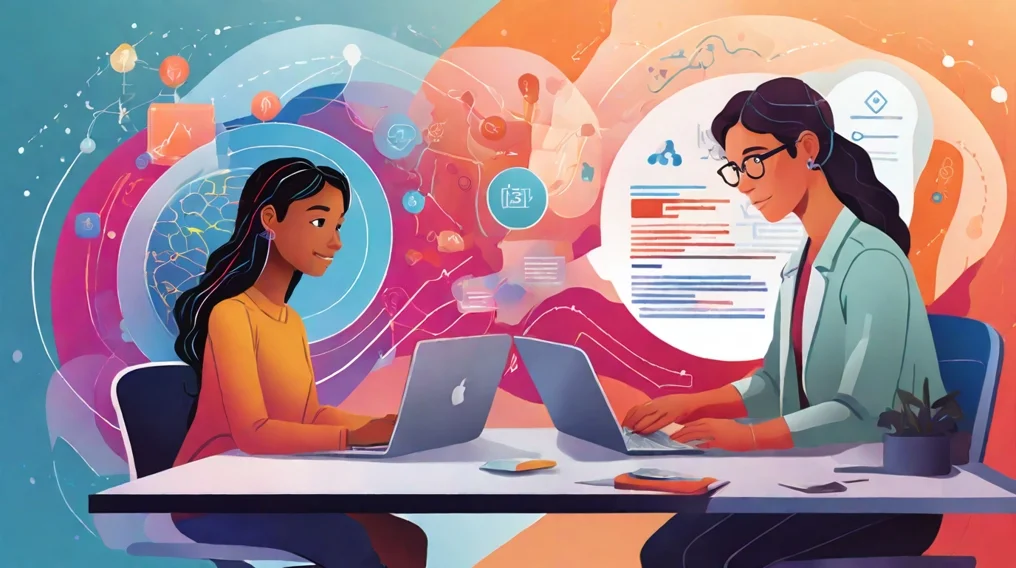Artificial Intelligence in higher education is evolving rapidly in the United States. AI is no longer just a concept; it’s becoming an essential tool in transforming teaching, learning, and administration. From personalized learning experiences to streamlined administrative tasks, AI is reshaping the way colleges and universities operate. This article dives into its current role, benefits, challenges, and future potential in U.S. higher education.
How AI Is Used in Higher Education
Artificial intelligence in higher education is reshaping how students learn, how teachers teach, and how institutions manage operations. By integrating AI tools, colleges and universities are enhancing educational experiences and simplifying complex processes. Below are some of the key ways AI is being used:
Personalized Learning Experiences
AI systems analyze data about every student’s unique style, strengths, and weaknesses. Through such insight, AI creates customized lessons, study plans, and resources. For instance, a student struggling with math will find relevant tutorials or exercises on specific topics to address the gap. Artificial intelligence in higher education, in this way, enhances engagement and positively impacts academic success.
Automated Grading
From multiple-choice tests to essays and even coding assignments, AI tools will grade them. This automation of grading repetitive tasks for faculty leaves ample time to provide mentorship to students. Workload reduction for consistent evaluation applies artificial intelligence to higher education.
Efficient Administrative Operations
Colleges and universities use AI to handle tasks like admissions, enrollment management, and resource allocation. AI-powered chatbots answer common student questions about class schedules, financial aid, and campus events. These tools enhance efficiency, saving time for staff and improving the student experience.
Adaptive Learning Platforms
Adaptive learning systems rely on AI in monitoring students’ performance. Whenever a student has difficulty understanding the material, the system self-corrects through easier explanation or more practice exercises. More advanced learners have their content elevated in difficulty level. This enables them to master subjects without forcing them beyond what they could comprehend, therefore increasing the application of artificial intelligence in higher learning.
Student Guidance and Career Support
AI tools also guide students on the choice of courses and planning their careers. Based on the analysis of academic performance and career interests, AI makes suggestions on the best paths forward. This means students make informed decisions, which decreases dropout rates and increases readiness for the workforce.
In a nutshell, artificial intelligence in higher education transforms classrooms, administrative offices, and even the planning of a student’s future. Generally speaking, AI offers personalization, automation of tasks, and resources optimization and has become the cornerstone of modern education.
Read more : Top 5 Big Bird AI Voice Generators for Realistic Voice Output

Why AI Matters in Education
Artificial intelligence in higher education is not just a passing trend—it’s a game-changer. Its growing role highlights how technology can improve learning outcomes, streamline operations, and better prepare students for the future. Here’s why it matters:
- Personalized Learning Drives Student Success: Personalized learning is the new way to achieve success for every student. As students learn differently, traditional teaching cannot cater to individual needs. Artificial intelligence in higher education addresses this by offering personalized learning experiences. It keeps students engaged and helps them to better understand concepts and retain knowledge better.
- Streamlining Administrative Tasks Saves Time and Resources: In turn, streamlined administrative tasks save time as well as resources. Enrollment and scheduling, for example, can be repetitive processes made easier by the use of AI tools. By streamlining these routine tasks, colleges and universities can focus more on helping students learn.
- Prepares Students for an AI-Driven Job Market: The workforce is rapidly changing, and AI is involved in most industries. Artificial intelligence in higher education equips students with the necessary skills for the future. Learning to use AI tools and understanding their applications ensures graduates are ready for the challenges of an AI-centric world.
- Decision-Making Across Institutions: AI enables universities to analyze large amounts of data, ranging from student performance to resource usage. This data-driven approach will help make better decisions regarding curriculum design, support services, and resource allocation. It ensures that schools meet the needs of their students effectively.
In short, artificial intelligence in higher education matters because it drives success, saves time, and prepares students for the future. Its integration offers transformative opportunities to improve every aspect of education, from classrooms to campus operations.
Challenges Schools Face with AI
While artificial intelligence in higher education offers many advantages, it also brings challenges. Schools must navigate these issues carefully to maximize AI’s benefits while addressing its risks:
- Data Privacy Concerns: AI systems collect and analyze vast amounts of student data to deliver personalized experiences. However, this raises questions about how data is stored, used, and protected. Institutions must ensure compliance with privacy laws to maintain trust.
- Equity and Access: Not all schools and students have equal access to AI tools. Underfunded institutions may struggle to implement AI, while underserved students may miss out on its benefits. Artificial intelligence in higher education must be deployed thoughtfully to avoid deepening existing inequalities.
- Risk of Cheating and Misuse: AI tools like text generators and homework assistants can be misused by students. This raises concerns about academic integrity and whether AI could inadvertently promote dishonest behavior. Schools need clear policies to manage these risks.
- Lack of Human Touch: While AI improves efficiency, it cannot replace the emotional support and mentorship provided by educators. Over-reliance on AI might lead to less personal interaction, which is critical for student growth and well-being.
By addressing these challenges, institutions can ensure that artificial intelligence in higher education enhances learning without creating new problems. Transparent policies, training, and equitable implementation are key to overcoming these obstacles.
Read more : AI SEO Tools Scale Agile Solutions: Boost Your SEO Efficiency

How Schools Are Responding
The rapid integration of artificial intelligence in higher education has urged institutions to adapt swiftly. Schools are actively taking steps to address challenges, optimize AI’s potential, and ensure responsible use. Below are some key strategies:
Creating AI Policies and Guidelines
To navigate the evolving landscape, colleges and universities are:
- Developing clear policies on ethical AI practices and data privacy.
- Establishing rules for AI usage in assignments, research, and classroom activities.
For instance, specific guidelines help maintain integrity when using AI tools for academic purposes.
Training Faculty and Students
Transitioning into AI-enabled education requires preparation. Schools are:
- Offering training programs for educators to integrate AI into teaching strategies.
- Teaching students to use AI responsibly for research, skill-building, and innovation.
This dual approach equips both teachers and learners to harness the full potential of artificial intelligence in higher education.
Innovative AI Applications
To stay at the forefront of technology, institutions are exploring creative uses of AI. For example:
- Georgia Tech has implemented AI-powered teaching assistants to provide real-time support.
- AI tools are being used to answer student queries, recommend resources, and simplify complex concepts.
These innovations create a more interactive and engaging learning experience.
Promoting Equity in AI Access
Recognizing the digital divide, schools are ensuring fair access to AI tools by:
- Partnering with technology providers to offer free or affordable AI resources.
- Expanding access to all students, regardless of socioeconomic background.
This ensures that the benefits of artificial intelligence in higher education reach everyone.
Encouraging Responsible Use
To address ethical concerns, schools are emphasizing responsible AI practices by:
- Educating students about academic integrity and the risks of misuse.
- Implementing plagiarism detection tools to discourage cheating with AI-generated content.
This focus on ethics fosters a culture of trust and accountability.
A Balanced Approach to AI Integration
By creating policies, offering training, promoting equity, and encouraging ethical practices, institutions are setting the stage for a responsible AI revolution. These proactive measures ensure that artificial intelligence enhances higher education without compromising academic values or accessibility.

The Road Ahead
Artificial intelligence in higher education—the state of the field—is evolving rapidly and holds immense potential. As schools continue to embrace AI, the focus will shift to ensuring its responsible and equitable use. Here’s what lies ahead:
- Expanding AI Integration
In the future, AI will become more deeply embedded in higher education. From personalized learning platforms to smart campus systems, artificial intelligence in higher education will transform how institutions operate. This widespread adoption will make education more accessible, efficient, and impactful. - Advancing Ethical AI Use
Ethical concerns about privacy, equity, and academic integrity will remain central. Schools must develop stronger safeguards to ensure AI use respects students’ rights and promotes fairness. Transparency in how AI systems function will build trust among students and educators. - Bridging the Digital Divide
To ensure that artificial intelligence in higher education benefits everyone, institutions will need to address access gaps. Partnerships with tech companies and government initiatives can help provide AI tools to underfunded schools and underserved communities. - Preparing for AI-Driven Careers
As AI continues to shape the job market, higher education will need to prepare students for these changes. Schools will increasingly focus on teaching AI-related skills, such as data analysis, machine learning, and ethical decision-making. Graduates will be better equipped to succeed in an AI-driven world. - Balancing Technology with Humanity
While AI offers efficiency, the importance of human connection in education cannot be ignored. Institutions must strike a balance by leveraging AI for repetitive tasks while preserving meaningful student-teacher interactions.
The future of artificial intelligence in higher education promises exciting possibilities, but it also demands thoughtful planning. By addressing challenges and embracing opportunities, schools can create an education system that’s innovative, inclusive, and future-ready.




